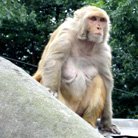This may be the last internet contact I have in a bit, since I’ve begun my travels to the clinic site in the village of Sanfe Bagar, Achham. Since the more interactive (and less administrative) part of my trip begins now, I suppose this requires some more background.
Nyaya Health was originally conceived of by Jason Andrews, a Yale undergraduate. Through all his college summers, he traveled to Nepal to do medical work in the Kathmandu valley, where he helped secure HIV/AIDS resources for IV drug users in the capital city. This vision followed him into med school (at Yale again) where he formally created the NGO. During his travels, he met Kathmandu-ite Roshani Dunghana, a young Nepali filmmaker. The two ended up getting married, and their confluence of interests (Jason for AIDS relief and Roshani for using film to progressive action) inspired them to travel to far western Nepal. There, the two saw the deplorable condition of health and development in general, exacerbated by the recently-ended Nepali civil war. Particularly depressing was the fact that the national government had constructed a 15-bed hospital in nearby Bayalpata, but the clinic was never staffed and never stocked. To this day, it is an abandoned building. Upon returning to Yale, Jason contacted two friends, Duncan Smith-Rohrberg Maru and Sanjay Basu, and the three decided to begin an effort to rectify the problem. Duncan and Jason traveled to Achham, one of the western districts, in May 2007 and while there decided to establish a PHCC (primary health care center) in the village of Sanfe Bagar. The Nepal Health Equity Initiative was born.
Currently, the clinic building, a non-inpatient facility, is undergoing renovation and outfitting to become a suitable health center. In addition, agreements are being finalized with domestic agencies, other NGOs, and the staff. Much of my work in Kathmandu has been managerial, and I’m now shifting gears and going to Sanfe with our prospective medical director, Dr. Bishnu Kattel.
Our travels at this point have taken us from the capital to the southwestern city of Dangadhi. The town is just 10km from the Indian border, and is in the heart of the Terai, a sweltering jungle. Apparently, the region used to be almost devoid of inhabitants due to malaria falciparum. (In fact, Dr. Bishnu tells me that when he was a child, the prevalence of malaria and leprosy was so great in the Terai that his parents would joke about how your finger would fall off if you even pointed towards the forest). The few people who did persist in the Terai, the Tharus, were considered magical since they enjoy some measure of immunity to the disease. Modern development of the area via swamp draining, DDT spraying, and aggressive prophylactic measures, however, has wiped out falciparum (though vivax still stubbornly remains) and the region is one of the fastest-growing districts in Nepal. The place is still a breeding ground for mosquitoes though, and last night alone I was bitten over twenty times— while wearing a blanket. I’m paranoid about these things, so I've been making sure to take my doxycycline prophylaxis. Interestingly, none of the Nepalese finds malaria at all worrying, and Dr. Bishnu actually rejected my offer of doxycycline (which is understandable, since the drug has some minor GI side effects). The only person who has shared my worries about malaria is Chris, and he's in Kathmandu, where malaria is not present.
As for the climate, it's more humid than anything I've ever encountered in my life. Merely standing is good enough to get you sticky, and life is an endless quest to stay cool. In addition, it stormed (rained by Dangadhian standards) last night, and now the streets are a sea of brown water.
Populationwise, Dangadhi is interesting due to its proximity to India. Whereas I could blend in easily with the Gurungs and Rais of northern Nepal, I stand out pretty clearly here, since the majority of people are darker. This leads to a fair amount of staring and pointing. For the first time since coming to the country, people have been approaching me and asking if I’m Chinese or Japanese. This is facilitated by the fact that most people travel slowly. Poorer and more rural than Kathmandu and Pokhara, Dangadhi is largely an unmotorized city, with no taxis and only the occasional motorbike. As such, our (and everyone's) main means of transportation is rickshaw. The town is small enough that rickshaws will get us anywhere in good time, though, and the open-air travel is strangely refreshing.
A highlight of the journey, however, was meeting up with Dr. Japath Thapa and his friends, Dr. Krishna and Dr. Patan. The trio of young doctors (all in their mid-twenties) has been working at Seti Zonal Hospital for the past few months following the completion of their internships. They are also alumni of Dr. Bishnu and Bijay. As such, they’ve really gone out of their way to take care of us, offering us food, lodging, and even Tuborg Strong (the 15-proof local beer). In our quest to find them, however, I was afforded a unique view of the “medical district” of Dangadhi.
Nepal’s state medical system is broken up into several tiers. At the very top are a few national hospitals largely affiliated with universities. Most are in urban areas. Below them are zonal hospitals, set up to service a collection of districts. The next level contains the district hospitals, which serve individual districts. Following them are primary health care centers, which function to varying levels of capacity in villages. Lastly, there are health posts, which are irregularly-staffed clinics run by HAs (Health Assistants) or ANMs (Auxiliary Nurse Midwives), not doctors.
Anyways, I’m out of time, since the jeep that will take us to Doti, the neighbor district of Achham, is here. There, we will most likely stay at the home of Dr. Prakash Thapa, who is working at Doti District Hospital and interview our clinic’s potential ANM. More to come.
